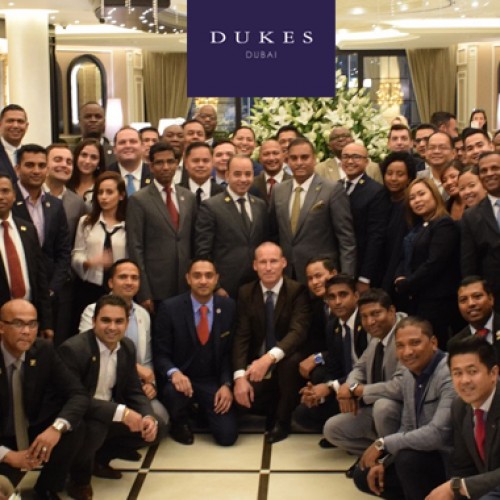A Peek Inside the World of Destination Marketing: A Guide to the Roles and Responsibilities of DMOs
Strategies
Words by Prem Kumar
Unarguably, a tourism economy thrives on visitor arrivals. In order to enhance their appeal among visitors and attract them in large number, destinations market and advertise their tourism attractions and facilities inclusively through different ways, highlighting their unique tourism attributes. This act of marketing any city, state, territory or country as a travel destination by dedicated agencies is called destination marketing. Termed as a major part of the implementation process by PATA, destination marketing includes key activities such as advertising through different modes of communications, organising sales missions, roadshows, participating in exhibitions, conducting FAM trips and so on.
Destination marketing has become one of the key focus areas in the tourism industry in recent years. As a result of this increased focus, the role and responsibilities of destination marketing organisations (DMOs), agencies responsible for marketing travel destinations, have also become more onerous and instrumental in the overall promotion and growth of tourism. DMOs, usually known as tourism boards, authorities or organisations, undertake activities such as consumer behaviour research in potential markets, formulating marketing strategies and implementing those strategies. They spearhead marketing campaigns and monitor the response and outcome of their actions. They also serve as crucial links between travel destinations and their markets, between visitors and travel and hospitality service providers.
As governments all over the world recognise the role and contribution of the tourism sector in the overall socio-economic development of their people, the importance of destination marketing has grown further. At a time when the global tourism industry, hit by the pandemic, is going through its worst phase, destination marketing is bound to assume more significance. In this backdrop, TnH spoke to some senior executives from the leading destination marketing and representation companies to understand their marketing strategies by learning about their responsibilities and more.
DMOs’ Responsibilities
Usually, every DMO has a broad mandate to promote a travel destination and generate demands for tourism products. They promote destinations in accordance with vision, values and goals laid down by concerned governments. DMOs work out plans and strategies and implement them to achieve those goals with available resources. Moreover, a DMO also engages and collaborates with key players and stakeholders in the tourism industry to market destination. For example, Tourism Australia conducts partnership activity with state and territory tourism organisations and commercial partners including airlines, banks, travel agencies, etc.
Leading DMOs of the world have offices in many countries and metropolises. For example, Tourism Australia, the Australian Government agency responsible for promoting Australia internationally as a world-class travel destination, is active in around 15 key markets. Similarly, the German National Tourist Office (GNTO) has offices in different parts of the world including India to promote Germany as a travel destination.
Some of the key responsibilities and activities of DMOs can be illustrated as below:
Image management
According to Romit Theophilus, Director, German National Tourist Office (GNTO), India, since 2006, GNTO’s India office has been working towards promoting Germany as a travel destination and enhancing its positive image by facilitating, strategizing and implementing the goals outlined by the German National Tourist Board to GNTO, India. GNTO’s India office communicates the diverse appeal of the country to the Indian market, thereby promoting a strong and attractive brand – ‘Destination Germany’.
Strategizing
One of the most important responsibilities of DMOs is to draw marketing strategies for promoting tourism in destinations. Well-planned strategies are a prerequisite for successful destination marketing. If your strategy is flawed, your marketing efforts are bound to fail. While every DMO has almost similar responsibilities, they adopt different strategies to market their destinations. Describing the key responsibilities of his organisation, Theophilus says that the GNTO India’s responsibilities and activities include the development of new marketing strategies and concepts based on specific themes, events and attractions and also bringing together and optimising the diverse marketing activities of partners in the German travel industry.
Working with the travel trade, organising consumer-led activities and communicating largely through the digital platform have been key features of GNTO’s strategy for the Indian market. “GNTO has always believed in strengthening our partnership both with the travel trade and consumer-led activities to showcase the variety of offering Germany has to offer,” says Theophilus.
For Indians travelling aboard, Germany has emerged as one of the most sought-after travel destinations. Since the inception of GNTO’s India Office, visitor overnights from India to Germany have grown by over 300% and the country ranks no. 2 for Indian travellers visiting Europe. “Our innovations and strategies devised for the Indian market have been incorporated world over as a benchmark by German National Tourist Office. Our novelties have brought results both qualitatively and quantitatively for visitor arrivals to Germany,” said Theophilus.
Focus on priority markets
Evidences suggest that a successful marketing strategy should be focussed on select potential markets rather than covering each and every one. For example, Tourism Australia invests most of its effort and resources in a portfolio of priority markets that have the greatest potential for long-term visitor expenditure and growth. “Our leisure marketing approach is developed via a framework that responds to the marketing challenge in each market and takes advantage of their forecast value over a mid to long-term period. Markets have been classified on this basis as stars, solid deliverers, distribution focused and rising stars,” says Nishant Kashikar, Tourism Australia’s Country Manager for India & Gulf. For Tourism Australia, India features as a rising star market and has earned the distinction of being the fastest-growing inbound market for Tourism Australia for three consecutive years in pre-Covid time.
Shun one-size-fits-all approach
While DMOs should take inspirations from successful strategies adopted by their peers, they should develop their own strategies taking into account their USPs, markets and resources and avoid a one-size-fits-all approach, as each destination and market is different from others. That is what organisations like Think Strawberries do. Munnmunn Marwah, Chief Operating Officer of Think Strawberries says that one of the things “we consciously refrain from is following a ‘one-size-fits-all approach. We understand that every client is different and so are his needs therefore we try not to restrict ourselves with the singular concept of ‘ideal’.” Think Strawberries, a leading destination representation company, has had represented many leading travel destinations and brands in India.
Implementation
While having well-planned strategies are important for destination marketing, ultimate success lies in effective and seamless implementation of these strategies by DMOs through various activities, Key among them are activities such as communication, marketing, advertising, public relations, press conference, trade shows, digital/social media campaigns. DMOs like Tourism Australia undertakes activities such as social and digital media marketing, traditional advertising, public relations and media programs, trade shows and programs for the tourism industry, consumer promotions, online communications and consumer research.
“Our marketing campaigns span across social media, content and storytelling, Tourism Australia websites, brand advertising, public relations, promotions, events and advocacy programs. This also includes partnership activity with state and territory tourism organisations and commercial partners,” says Kashikar. Tourism Australia promotes marketing communications under the ‘There’s nothing like Australia’ campaign umbrella, highlighting the best attractions and experiences Australia has to offer.
Monitoring
Besides deep insights into markets, effective destination marketing also entails constant monitoring and regular review of marketing strategies and campaigns for assessing the impact and outcome of all marketing efforts. Underlining the importance of monitoring, Kashikar informed that Tourism Australia monitors its performance through its quarterly consumer demand project and brand tracking research, heightening consumer insights that help inform and improve its marketing activities. The purpose of this research is to provide a holistic picture of how Australia’s destination brand is perceived and to assess the impact of its advertising and communications.
Tourism Australia’s marketing impact metrics are supported by a suite of lead indicators and campaign-specific key performance indicators and targets that are included in campaign development. These indicators are reviewed regularly, including ‘live’ monitoring of digital campaign metrics to enable insights and updates to messaging as appropriate during campaign roll-out.
Conclusion
The aforementioned points such as image management, strategizing, implementation and monitoring of overall marketing activities form key responsibilities of DMOs, and their proper discharging determines the success of DMOs’ marketing efforts.
The success of marketing strategies also depends to a great extent on the choice of media. While traditional media such as print and television still matters, with the emergence of Digital Media and Social Media as important channels, DMOs are now aggressively tapping these platforms that are cost-effective and wider in reach. Agencies like GNTO overwhelmingly rely on digital media to communicate their messages in India and other markets.
In nutshell, it can be concluded that a robust and well-planned strategy, suitable modes of communication, focus on priority markets and segments, and effective implementation account for a DMO’s marketing success.
Key Takeaways
- DMOs promote a positive image of destinations through different modes of communication.
- Formulating marketing strategies and implementing them are two important responsibilities of DMOs.
- Other key responsibilities of DMOs include conducting activities such as marketing, advertising, public relations, engaging with the travel trade and conducting trade shows/sales missions
- For optimum results, destinations should invest most of their effort and resources in priority markets that have greater potential.
- DMOs should study successful strategies, but develop their own, avoid a one-size-fits-all approach, as each destination and market is different from the other.
- While traditional media still matters, DMOs are aggressively using Digital Media, Social Media.
- Effective destination marketing entails constant monitoring, regular review of marketing strategies/campaigns for assessing their impact and outcome.
You might also like
DUKES Dubai offers key for UAE concierge meeting
Monthly meeting of Les Clefs d’Or draws more than 100 concierges to Palm Jumeirah hotel There was no excuse for anything other than a warm welcome and a golden key
Taiwan: an idyllic country to visit
Taiwan is a beautiful country and offers many exciting options for travelers. The country is gradually becoming popular among international travelers including Indians. With an aim to promote and popularize
Ski Dubai celebrates over Six Years of Snow Penguins
The famous residents are part of the resort’s successful breeding programme, supported by US-based multi-generation research programme Majid Al Futtaim, the leading shopping mall, retail and leisure pioneer across the








